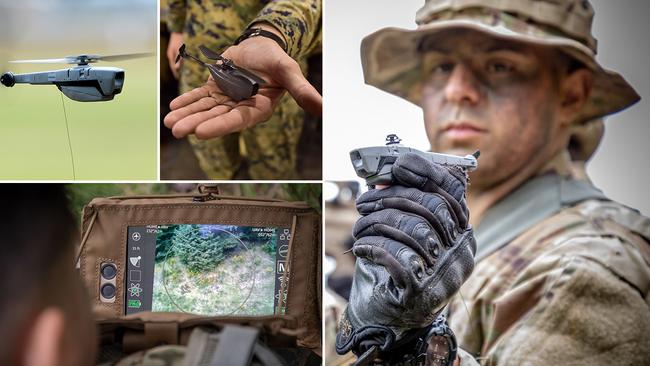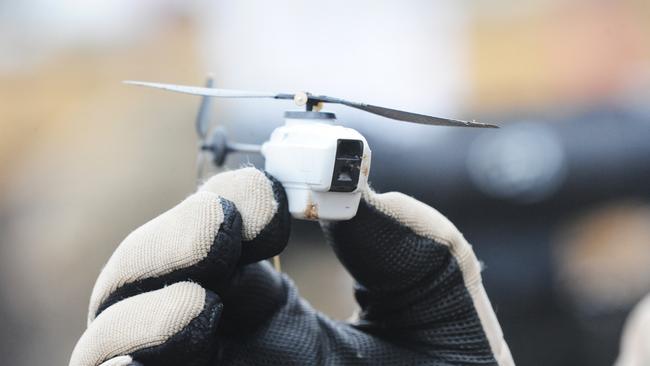Black Hornet nanodrone gives soldiers a spy in the sky
It may look like a child’s toy, but the Black Hornet nanodrone will change the nature of warfare.

It may look like a child’s toy helicopter but the nanodrone, which can slip down a street or through a building unnoticed, is changing the nature of warfare.
The US army has deployed the pencil-length Black Hornet drones for the first time this month, with the 82nd Airborne Division in Afghanistan, and plans to supply them to one in ten of its combat soldiers.
The French army uses them in Mali and the British Army, which used an earlier version in Afghanistan in 2011, recently bought 30 of the latest model for almost £1.4 million. The new version is far more advanced and comes with night vision, GPS and high-resolution video.
At 16.8cm long and only 32g the Black Hornet is quiet and provides instant reconnaissance without being detected. Its Norwegian creator, Prox Dynamics, was bought out by an American company, Flir Systems, in 2016.
Flir Systems says the drone is so small that it is almost impossible to see or hear even when close to what it is studying. The electric, twin-rotor drone can fly for 25 minutes, stay connected to an operator 1.2 miles away and travel at 21km/h in temperatures as high as 43C.
It sends live video and high-definition images back to the operator, using a thermal imaging camera by night. The latest version sends information via an encrypted link approved by the US military.
The drones are controlled by an operator with a touchscreen display but can also follow a set route, returning as programmed or on demand.
The Black Hornet also uses its cameras and artificial intelligence to learn as it flies, building up a picture of obstacles, such as trees, that it should avoid or fly around. This helps it to determine its relative position when indoors, where a control signal may be blocked.

Ole Aguirre from Flir Systems said the drones were particularly useful in densely-populated urban areas because they can slip down streets and over rooftops looking for snipers or other threats. They can fly into darkened buildings, caves and even pipes.
“Before you enter by foot or by vehicle patrol you want to send these in front of you,” he said.
“You can get this into a street, fly it close to the ground, go up staircases and onto the roof, all while you are not putting your head out there.”
The system comes with a docking station for two drones that protects them when they are not in use, putting the total weight at barely half a kilogram in a case no bigger than a pouch a soldier might use for rifle ammunition.
“You don’t have to wait for other larger resources or call back to headquarters to ask for a bigger drone to conduct some surveillance,” Mr Aguirre said.
“A squad leader can send this system into any area where he wants to have eyes in the skies. It takes 20 seconds to launch the system and it can launch from your hand.”



To join the conversation, please log in. Don't have an account? Register
Join the conversation, you are commenting as Logout